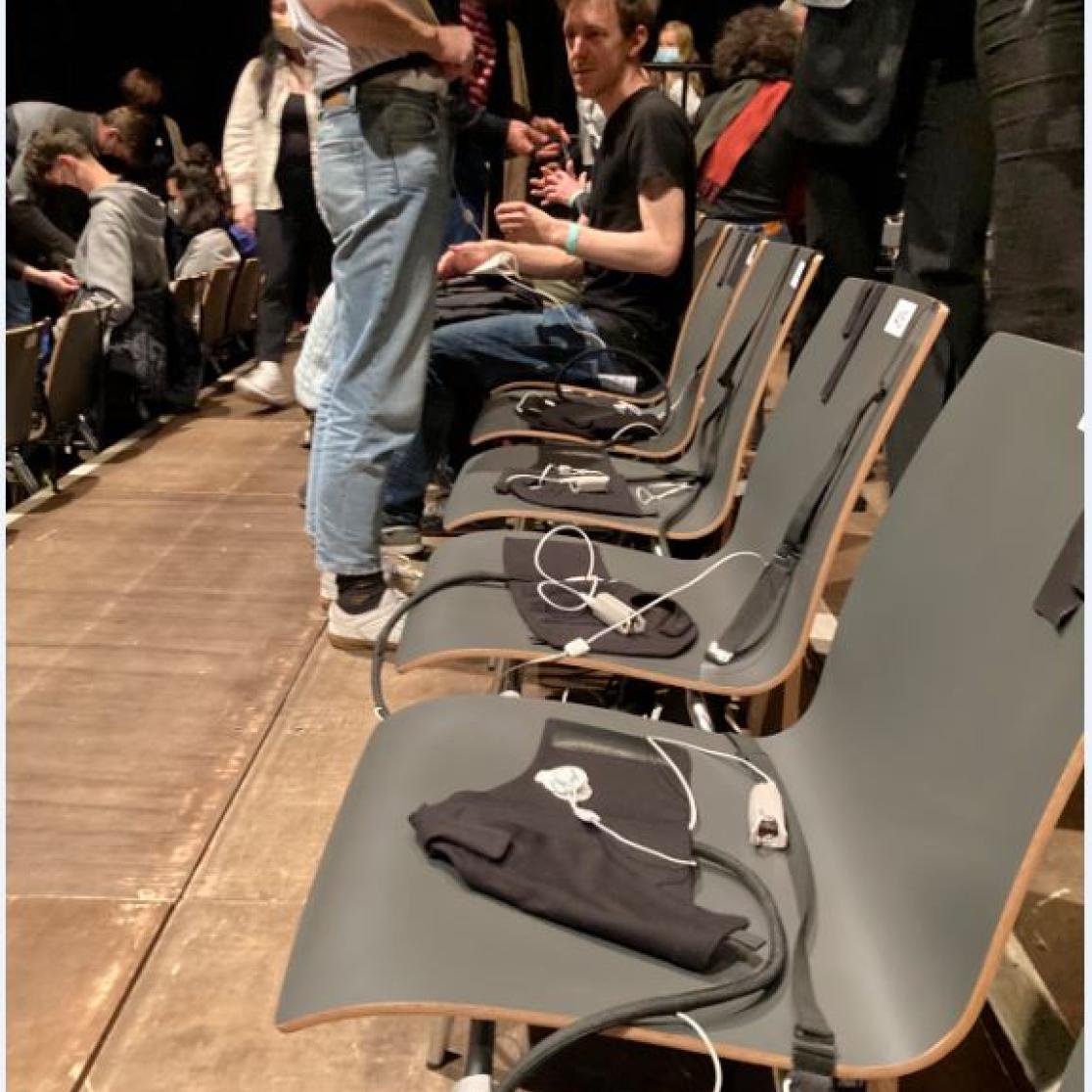The audience as test subject
The Radialsystem in Berlin is a special place. The old red brick pumping station was part of the urban water network long ago. Since 2006 it has been an arts center that offers space for innovative concerts, dance and theater performances. When we walk into the hall it is immediately clear that there is no ordinary concert tonight. To our left and right, people have sensors attached to their bodies. Soon it's our turn: a belt around the chest, a sensor on the finger and a glove with wires that run to a small box. The musicians of the string quintet enter the hall and the music begins.
The concert is an experiment, and we are the guinea pigs. The regularity of our breathing, our heartbeat and our skin conductance are all measured, processed, and converted into data. The aim of the experiment is to learn more about the concert experience: which forms of presentation ensure greater immersion in the music? At what moments does the audience experience the music in sync, as it were?
Prior to the concert, we received a questionnaire in a large hall about our musical preferences and experiences. This information is supplemented by conversations with the musicians and spectators who are not connected to the measuring equipment. Afterwards there is another questionnaire, this time about our experiences during the concert. On our individual iPad, we see moments from the performance we just listened to. The passages have been chosen based on our individual measurements, showing where the music touched us: the opening of Brahms' F-major Quintet and a slow movement from Australian composer Brett Dean's Epitaphs.
Our visit to Berlin is an example of how the MCICM connects with international concert research. The project is led by Professor Martin Tröndle from Zeppelin University in Ludwigshafen and carried out by an international team of researchers. The Volkswagen Stiftung is funding the research. In the coming years, the researchers will analyze the flow of data generated by the twelve concert evenings.
After we have answered the last questions, we get a printout of our breathing data, inserted between those of the other visitors. The graph was made by an artist: where we breathed faster, the line is thicker. During a meeting the next morning, the question is how to interpret the data. Even if we can make connections between physical reactions and musical moments, what does that say about the magic of a concert experience?
Neil T. Smith, Postdoc researcher
Peter Peters, Director of the MCICM
